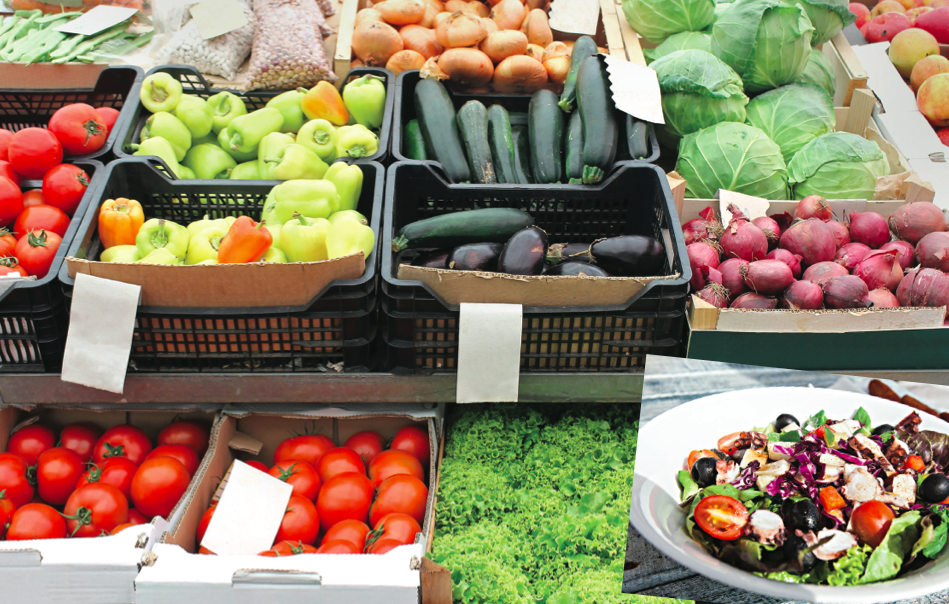Not-for-profit organizations are often undervalued and as a result underfunded, but they are so important! Why, you ask? Because their work is very significant to the community or group of people they serve. Instead of maximizing profits, which means maximizing revenues while minimizing costs, they are more concerned with ensuring the revenue is greater than costs. The focus is instead on the people and not the profits. People who dedicate their lives to helping others need to be recognized and celebrated.One example of a non-profit in the Dowsview area is: The Jewish Family and Child Services run thrift shop called Just-A-Second Shop. They are opened six days a week and offers new and gently used clothing and small household items at very reasonable prices. All proceeds are used to focus on sending children in the community to Jewish day and overnight camps -among other things. The shop is staffed by a team of dedicated volunteers and employees who are happy to help.If you are planning some spring cleaning and have gently-used clothing and/or small household items in good condition, Just-A-Second Shop would be happy to take them off your hands. By donating you are helping people in need in the community. If you have questions about donating you can call 416.638.7800 x 6999. You can also drop off the items you’d like to donate at any of the bright yellow drop-off boxes located at the store and the following locations: Sherman Campus, 4600 Bathurst Street; Beth Tzedec Synagogue, 1700 Bathurst Street (NE side of the parking lot), Beth Tikvah Synagogue, 3080 Bayview Avenue; and, Associated Hebrew School, 300 Atkinson Avenue, Thornhill.For more information: Call, 416 633 9898 or visit 4117 Bathurst Street, Toronto, ON M3H 3P4Hours: Monday to Wednesday - 11:00 a.m. to 6:00 p.m.; Thursday - 11:00 a.m. to 8:00 p.m.; Friday & Sunday, 10:00 a.m. to 3:00 p.m. Closed Saturdays and Jewish Holidays.
Magnotta Brewery:Featuring Peaches En Regalia and Dungeons and Flagons ESB
This new feature column, Community Brews, aims to celebrate the small breweries in our community, sharing not only the tasting notes of their latest feature beer, but also telling their story and describing their history in our local area. In this edition, we introduce Magnotta Brewery. Gabe and Rossana Magnotta founded its Winery business in 1990, producing 100% Ontario vintages from grapes grown at 180 acres of family-owned and operated vineyards. The story of this winery business, which is now the third largest in Ontario, is familiar to many local consumers. A lesser-known part of its history began in 1996 with the formation of Magnotta Brewery, which a location in the heart of North York at Yonge and Finch.It introduced traditionally brewed craft lagers and ales that would win awards at national and international competitions including Brewery of the Year. More recently, rotating experimental brews have been added to the classic lineup, expanding the repertoire of available tastes for beer lovers. These specialty brews were created by staff members who work at the brewery and are interested in honing their skills as an apprentice under the watchful eye of the head brewer.Barbara Ziola is a seasoned veteran of the Canada brewing industry who takes her role as head brewer seriously when it comes to safety, sanitation, and quality yet always has a smile and time to take a curious person on a tour of the brewery, teaching as she goes. “I love what I do,” she told me as she described how a large tank known as a “sparge” extracts the sweet sugary liquid, known as “wort” from the crushed barley and hot water mixture known as “mash”. Later in the process hops are added to impart flavour and then yeast is used to ferment the sugars into alcohol. While I was learning about brewing, I also learned about Magnotta’s community involvement.The brewery hires people of all ages and backgrounds whether they have a formal education or not, including people with disabilities. I saw many smiling faces going about their tasks, chatting casually with one another as they filled a box with the latest brews. I was not surprised to learn the company was recognized as one of Canada’s 50 best managed for over 10 consecutive years.Its annual Art on the Bottle competition and scholarship, which was won by 4th year arts student Kelly Baskin this past year, promotes the work of art students by featuring it on the bottle of a new release. It is also a strong supporter of medical research through its G. Magnotta Foundation that works closely with local medical institutions including the Humber River Hospital.A family business with deep community ties is a good fit for the growing craft beer culture in our city, but only sets the stage for the brews themselves to shine. Originally only available at the Vaughn head office, all of the classic beers can now be ordered and picked up at any Magnotta location, including in North York.Reviews:After my tour, I had the pleasure of sampling one of the exclusive new brews that make the trek up to Vaughn a worthwhile treat: Peaches En Regalia. Made in the traditional Belgian wheat beer style, this honey-coloured ale has a sour nose, smooth body, and a crisp finish that lingers pleasantly with hints of Ontario peaches sourced from P.G. Enns Farms. Its 4.8% alcohol and low bitterness make it a great complement to a light meal of chicken and pasta.Next, I sampled Dungeons and Flagons ESB, the creation of employee and amateur brewer Dean. “I wanted to create something with a bit more bitterness and boldness than our classic beers,” he explained as he walked me through his creative process. With some experimentation and healthy competition between employees, he succeeded in melding the tradition of English extra special bitter ales with Ontario hops to create a lighter, honey bodied brew with a crisp bitter finish. At 5.5% alcohol and around 20 International Bitterness Units (IBUs), the hops and malt are well-balanced. Enjoy it beside a roaring fire with steak-frites and let your imagination soar!
Humans of Downsview
“It has been stated that the City of Toronto is the one of the most culturally diverse cities in the world. Probably most reflective of this is the representation of 100 different nationalities and over 70 different languages and dialects spoken in the Jane-Finch community alone. Although the community has its share of problems, largely due to systemic racialized poverty, my experience is that the community has incredible riches, with wonderful people who have a caring spirit and a deep sense of community. It has been a blessed privilege to work in Jane and Finch for the last 22 years.” –Barry. Community Minister.
Humans of Downsview
“People focus on the past, the past haunts the area. When people are from somewhere else, like Quebec, and they hear about Jane and Finch, they have a bad idea about it because they only see what it used to be. Sometimes I come home from work at one o’clock or two o’clock at night, and I go home so easy, so freely, I don’t really see hoodlums much. Big media needs to focus on what is present right now. Bigger establishments are too scared to come to the area, but it’s a family community, and very diverse. There are people here that want to spend money but they have to go far out of town to buy what they want, because big stores only see the past and don’t want to come help us build a future.” – Vincent, Security Guard.
Restaurant Review: La Traviata Ristorante & Pizzeria – 852 Wilson Ave. – www.latraviata.ca – 416-635-8891
La Traviata has got to be one of the best Italian restaurants in all of Downsview. On a clear moonlit night I dined with my extended family, on my wife’s side, due to the awesome generosity of my beloved in-laws, who have hearts of gold. We have dined here on maybe ten to fifteen occasions. The restaurant never fails to impress, therefore, never disappoints.The restaurant is impeccably clean, and the white table cloths add charm to the décor. The grey walls exude a feeling akin to something from Architectural Digest.The wait staff is always congenial, warm, effervescent, and beguiling, which always wins us over. I would be remiss if I did not mention that it was, of course, mainly due to the awesome cuisine.The restaurant is very intimate but still affords patrons the opportunity to converse at an audible level. When there are lulls in conversation, there is some very appealing pop music which serenades you as you dine.Since we usually go with a party of eight, everyone habitually delves into different entrees. We usually forgo any appetizers or desserts due to the fact the entrees are of generous proportions.My wife habitually opts for the chicken parmigiana with penne -which she devours since it’s so delectable. My father-in-law and mother-in-law sometimes elect to choose shrimp arrabiata or veal parmigiana. Those two entrees are finger lickin’ good! My sister-in-law and her partner usually share two entrees. Their entrees of choice are eggplant parmigiana and the margherita pizza. Since they both share two options, their choices go much further in pleasing the palate. I waver between the chicken cacciatore and the shrimp arrabiata depending on what my gastronomic consciousness is instructing me. Our niece is very much inclined to either of the aforesaid shrimp arrabiata or the mussels arrabiata. Our nephew, who is six feet tall, opts for various things. On our last visit he and I were in sync and so he indulged in the amazing chicken cacciatore.Regardless of whatever you choose off the menu, all the dishes are winners! You won’t go wrong. Plus the bread which is served with olive oil and butter does its job by whetting the appetite.The overhanging lights illuminate the restaurant quite nicely, providing ample lighting for you to see your meal and your dining companions, not like some restaurants which have dim lighting.It’s fully accessible via TTC as there is a stop nearby. If you’re driving there is some parking in the front of the resto or on a nearby side street.The lavatories are always very clean but be careful walking down the stairs en route if you have to answer the call of nature. La Traviata is open seven days a week so you can go anytime to have a delicious and very appetizing meal!
Curries on my Mind
The yellow colour of Asian curries is due to turmeric, a spice which appears often in health news.In India and in some other parts of south-east Asia, curries with turmeric are consumed daily and often more than once per day. In those regions, the incidence of degenerative mental conditions in old age is lower than here in North America, and some types of cancer are significantly rarer. Not surprisingly, turmeric and curcumin, an active component of turmeric, receive wide-ranging scientific study, more so than any other spice.Other benefits from turmeric that have been scientifically studied touch on cataracts, diabetes, M.S., HIV, and skin and liver problems. Unfortunately, many of the studies, though numerous and expert are small. It is hard to get research funds for major health research on foods because drug companies cannot easily put patents on a spice and raise the price.Another problem is quantity. Traditional diets that provide evidence of health benefits of curries are diets that include turmeric in very large quantities; that spice is not quick to absorb. Micro-grinding and cooking in healthful oil may turn out to help.So what does all this mean in practical terms? If you come to consult me in my Downsview clinic will I prescribe hot curries? Don’t count on that! But you don’t need any prescription to enjoy the curries.I started using turmeric in my kitchen around 2009. Now it is a family favorite. Consumption seems safe because millions of people eat curry more than ten times a week. For me, there is nothing to lose and a possible benefit to be gained. Turmeric as a simple curry and also in morning smoothies has become a very regular part of my cooking though it wasn’t part of my background. I don’t buy commercial curry mixes with salt and preservatives. I deeply admire and respect those who have mastered the complex, time-consuming, highly refined and elegant art of traditional curries made from scratch. I modestly experiment with simple turmeric and internet recipes. Try it. Learning new things is good for the brain. That is a scientific fact.We would be very pleased to respond to your health-related questions in this column. Write to nicole@IndividualCare.com. Nicole Constant is a registered Doctor of Naturopathy. Her website is: www.IndividualCare.CA. Before coming to Canada, she practiced as a medical doctor in Europe. She has lived in the Jane-Finch neighborhood since coming to Canada, where she has also been employed in social work and community development in addition to volunteer service in Mediation, Laughter Yoga and the Community Action Planning Group of York West.
Create a New Normal for the New Year
A New Year brings the opportunity to say yes to trying something new. Why not start by featuring a new ‘winter’ vegetable each week?Vegetables that thrive in cold-climates tend to be starchy, rooty, dense and bitter. Although, it is true that the colder months offer a more limited range of produce, winter boasts some surprising B-list superstars:Kohlrabi German for “cabbage turnip”, the greens and bulbs are edible and can be eaten raw or cooked. In fact, the bulb, which has a taste and texture similar to that of broccoli stems, tastes great once it is peeled, sliced and just sprinkled with some salt. The best way to eat the greens is to cook them just like you would kale. Kohlrabi needs to be thoroughly peeled before eating. Both the stems and the fibrous layer beneath need to be removed to reveal the edible crisp flesh underneath.Turnip They often have a cute blush of pink or purple near the top, where the sunlight hit the turnip while it was still in the ground. The larger the turnip, the more intense the flavour. Turnips are often squatter and rounder, with a brighter white colour. Cabbage There is good reason why the vegetable carries a pedestrian reputation: it is versatile, suiting itself nicely dressed up in a raw salad, braised in a savoury broth or just steamed. It is cheap and it lasts forever. This vegetable hates to go bad. And then there is sauerkraut and kimchee -giving a new purpose to the plant.Parsnips This hardy root vegetable enjoys cool climates – it requires frost to convert its starches to sugars and develop its sweet, nutty flavour. Although it bears a striking resemblance to a carrot, it has a pale, cream-coloured skin. Its tough, woody texture softens with cooking. They can be used in place of potatoes, sweet potatoes or turnips in cooking. They perform beautifully when roasted, pureed into soups, or mashed.Celeriac Also known as celery root, celeriac is not actually the root of celery stalks (although it tastes very similar). This plant grows underground, but the top is not edible. Purchase fat, globe-like types with rough-looking skin. The uglier, the better. The tough skin should not be eaten, but it helps keep the vegetable fresh. Store it with the skin on, next to your potatoes in a cool, dark place.Rutabaga Sweeter than a potato, and twice as creamy, this root can be mashed or made into oven "fries." Rutabagas are often coated in a wax seal when found in the grocery store. If this is the case, you must remove and discard it before eating. Keep rutabagas in a dark, cool place, along with the rest of your storage roots. They can also be refrigerated.Broccoli Rabe, also referred to as Rapini Is a more bitter, leafier vegetable than its counterpart, broccoli, but likes similar cool growing conditions. Look for leaves that are vibrant green, without any wilting or yellowing. Buds need to be unopened and stalks should be sharp and fresh looking. The vegetable can keep for five days in the refrigerator. Rapini can be added to an omelet, stir-fry or topped on pizza.Try some new vegetables in the kitchen this winter and do not forget – warmer temperatures will spring upon us soon.
Community Spotlight: Against All Odds (part 1)
Samuel Boakye was on a downward trajectory in his middle and early high school years. Today, he attends the University of Toronto and runs a non-profit program that exposes marginalized youth to experiences in the field of construction.Samuel moved into local community housing at age 10, his mother struggling to raise three children after her husband had left her some years ago."At my old school, I was a popular, energetic and playful kid." says Samuel, "When I moved, it was like I dropped rank and had to ascend again. There were many terms like 'teacher's pet' that would deter you from taking a positive role and become a target of bullying."Samuel reflected on his feelings of isolation and being bullied when he first arrived. His priority in school was his social status and he reached the top of that food chain as a tough kid with little interest in his studies.The transition to high school meant starting from the bottom once more. Samuel had few thoughts of the future and his focus was on fun and the respect of his peers. It was a time of frequent fights, trips to the principal's office and school suspensions.Samuel speaks of his mother's feelings about him during those years, "I think she had accepted I would never be the smart kid at school. At best, she hoped I would make it through school and find any job I could." By grade 10, Samuel's mother came to believe that her son's only chance of redemption might lie elsewhere; she made the hard decision to send her son to live with his father in Ghana.At the time, Samuel was extremely resentful of her plan to send him to his father. He plotted mischief he would unleash upon his arrival but when he faced his father once more in the flesh, all his plans melted away. "The moment I saw him again it was back to the drill sergeant and cadet." says Samuel with a grin.Samuel's father was a successful businessman back in Ghana, managing and owning over a dozen pharmacies. His father demanded discipline of his son but had no time to administer it so he sent Samuel to a boarding school where he would live on campus and under strict rules and supervision. At this new school, Samuel observed something that was incredibly surprising: some of the coolest and toughest kids also were the most academically involved. This was in stark contrast to the youth culture he was used to, which he described as idolizing mediocrity and apathy towards studies.Despite this realization, Samuel continued feeling resentment and disinterest in his studies. Half a year passed and Samuel's grades continued to be poor, so his exasperated father took him out of school and sent him to live with his two uncles. It was during this time with his uncles that two defining moments happened in Samuel's life, setting him on a path of reflection and ultimately redemption...to be continued next month
Access to Healthcare Services Is Everyone’s Problem
“Cancer patients have been complaining about the lack of parking all day”, the compassionate and understanding admin said to me as I arrived 30 minutes late for my appointment in the Cancer Clinic at the Humber River Regional Hospital. I had arrived at the campus in time for my appointment but then found myself driving around from parking lot to parking lot, along with dozens of other cars carrying sick people to the hospital, only to discover that every single lot was completely full. There was literally no patient parking anywhere on the multi-billion-dollar complex. Again. The same thing had happened on the day of my previous appointment. I had paid $120 for a parking pass that was completely useless. What was I going to do?As I exited the rear of the complex, I drove past three giant, passive-aggressive signs at the entrances of the three, large, half-full City of Toronto building parking lots that said, “PRIVATE PROPERTY!” and “NO HOSPITAL PARKING!” in bold red letters. Clearly the city was aware of the problem. Clearly the city felt it wasn’t its problem. Driving back around to the front of the complex, I noticed a tow truck on stand-by, waiting like a vulture for a patient to become sick enough or desperate enough to leave an unattended vehicle.I drove North of the hospital until the city’s unnecessary “no parking signs” in the adjacent residential area ceased to bloom. I passed dozens of cars, many of which had parking tickets for daring to park on a city street near a hospital for too long. The city was not only aware of the problem; it was also actively profiting from it through parking fines. When I eventually found a legal place to park my vehicle, the walk back to the hospital took 20 minutes. I’m able-bodied and in good health. Most hospital patients cannot walk for 20 minutes to go to and from their chemotherapy sessions. It’s unthinkable.The CEO of the Humber River Regional Hospital, Barb Collins, is very proud of the many awards it has received. It’s unfortunate that none of these awards are related to the very real, lived, patient experiences that have repeatedly been brought to her attention, like this one. Imagine the negative impact on the health of a cancer patient who has to deal with the frustration and expense of recovering a towed vehicle at the same time as chemotherapy, all because of “not my problem” finger pointing and poor planning for patient parking! Perhaps if a “fewest patients’ cars towed” award were created the Hospital would actually address the problem and add it to its list of “achievements”, since awards, not patient care, seem to be the executive priority.
As hydro bills continue to climb, families in North York are suffering
Ontario NDP Leader Andrea Horwath met with numerous residents of 2901 Jane St. in North York to discuss the impact of skyrocketing hydro rates on their families. “Hydro rates are out of control in this province because of bad decisions made by the Liberal government to privatize more and more of our electricity system,” said Horwath. “Instead of looking after her friends on Bay Street, the Premier should take real steps to help families throughout the GTA by making hydro affordable.” Residents of 2901 Jane St. told the NDP Leader about the challenges they are facing as retired people living on a fixed income. Even after switching to equal billing and receiving small rebates through the Ontario Electricity Support Program residents are still struggling, some going so far as to not cook or use electricity at all between 7am to 7pm. The residents of 2901 Jane St. are not unique in their struggles. Hydro bills have been skyrocketing out of control for many Ontarians all across the province. “I hear stories like these regularly from people I visit,” said Horwath. “Hydro rates are too high, they have been for a long time and Kathleen Wynne isn’t doing much about it. In fact, she is making it worse by continuing to sell-off Hydro One which will drive rates even further up.” The NDP Leader urged the Liberal government to do the right thing and cancel her plan to sell-off Hydro One because it will only make electricity more expensive for families, businesses and community organizations in Ontario.










